2009/09/09 The Beatles Digitally Remastered CD’s !
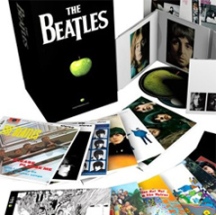

It’s yesterday once more! So many memories from my childhood!
I have been enjoying my new Beatles Remastered Box sets, both the Stereo and the Mono versions, released on Sept. 9, 2009.
All of the Beatles 13 original studio albums have been digitally remastered and carefully repackaged in digipak. The Mono version is packaged so carefully that it is identical to the original vinyl version. Every cd I pulled out from the Mono set was carefully placed inside a small half-circle/half square plastic wrapper, mimicking perfectly the original manner in which the vinyl versions were presented back then. Today’s younger generation would not appreciate the significance. Nor does the Stereo version have this special plastic packaging. The memories the wrapper brought back had me digging through my old records to see the original record packaging!
The sound quality of the Beatles Remastered set is truly beautiful, sharp, crisp and clear! An audiophile and Beatle lovers ultimate dream! And oh, the peace, comfort and sound of my treasured Beatles that came flooding back, yeah just like a friend I had not seen in over 40 years:
“And when the broken hearted people
Living in the world agree,
There will be an answer, let it be…”
Not too long before my mom died in 1991, Disney released a VHS video of the 1940 classic Fantasia. My mom loved this movie, the animation and the classical music. She had seen the movie at the theatre when she was a teenager, and when I was a child, she took me to see it as well, so that I could share her love of this beautiful movie! It was was a highlight of my life, watching my mom’s beloved Fantasia at the theatre !
When I bought mom the new VHS tape of Fantasia, we sat down to watch it together for the second time. When the movie was over, she turned and said to me: “Never in a million years did I ever dream that I would be watching, Fantasia in my own home in my lifetime.”
Disney will soon release a blu-ray version of Fantasia and Fantasia 200 in early 2010, and mom sadly won’t get to see them. She never even saw the more recent Fantasia 2000. And even more sadly, she will never know of the joy I have received from my cochlear implant this year. But I will continue to listen to Fantasia’s quality and sound, and also the spectacular Fantasia 2000.
In my mom’s words, I have to say that never in a million years did I ever dream that I would have a cochlear implant in my lifetime and listen to a gorgeous crisp and clear remastered set of Beatles albums, in my own house!
Even I can distinguish the extraordinary sound quality that comes with this remastered package! I can distinctly tell the difference between quality remastered songs like this remastered Beatles set, and the poor quality from some cd’s which I began collecting about 15 years ago. In the last 5 months, I have lived in total amazement at the miracle that my new cochlear implant has become! Yeah, I have always heard speech, sound and music, but everything sounds so much better, and if it’s digital, it’s even better!
I know that my hearing was much better when I was a child. I grew up with music my entire life. But the Beatles remastered set is so very special! And the Remastered Mono box set presents 10 of the albums as they were originally presented in mono at the time. The beauty, the words are so clear I hear almost every single word! The music is so distinctive, but does not overwhelm the words.
I think I went right from nursery songs to the Beatles. I don’t remember anything in between. I guess my first introduction to the Beatles was in August 1964. I was all of 7 years old, but I knew something special was happening that night. By the end of 1964, the Beatles had completed 4 albums. And on that night of August 22, 1964, I knew that these 4 lads from Liverpool were at the Empire Stadium. It was all everyone could talk about.
With the release of Sgt. Peppers Lonely Hearts Club Band in 1967, the world of music had changed. The Beatles were becoming more and more controversial. John Lennon said they were ‘greater than Jesus”. But my mother never ever disagreed with the musical tastes my brother and I were discovering.
Following the Beatlemania of 1964, my mother’s best friend’s daughter, Wendy, six years older than me, kept me well involved with current musical trends of the day. It seemed that everytime she came over to our house, she had another record for me to enjoy. Yesterday, and Michelle quickly became my favorite songs. She also introduced me to Tom Jones in 1968, with The Green Green Grass of Home and Delilah. By that time, the Tom Jones TV show was a regular feature on local television, so I grew up a diehard Tom Jones fan. The day she brought over another album for me is well etched in my mind. It was Simon & Garfunkel’s Bridge Over Troubled Water, album, and I played it for weeks on end.It was so stirring. The songs just burned into my brain.
But in 1967, the Beatles were even bigger than they were in 1964. And they were becoming very controversial. After all, they had long hair… they were doing drugs… And Yoko was coming on the scene and having an influence… Everything you DON’T do in 1967!
My brother had bought the St. Pepper’s album, and I listened to these amazing songs in the background. It became a ‘where were you when you first heard Sgt. Pepper’s Lonely Hearts Club Band” memory.
But the Beatles were out of my reach. Not because of my hearing loss, but because back then, I was just not considered old enough to be a part of this amazing musical group. They were too good, magical. They were almost “censored” to me, like some of today’s music is labeled with warnings that the lyrics are ‘explicit’. But I couldn’t help it. I listened to my brother’s Beatle records when he wasn’t around.
My brother was only 17 months older than I was. But he was able to enter a world that I couldn’t. In 1968, I was 11 years old, and my brother had bought the Beatles new White Album. I wanted to hear it. I wanted to see what was inside this colourless and plain looking album. It is often called the Beatles “grandest statement”. But it was written in a period of turmoil for the Beatles.
He showed the new White Album to my mother. We both looked at this newest album with curiosity. There were four big 8×10 glossy photos of each Beatle. That was a big treat, because in 1968, the Vancouver public schools did not even do single photos of each child, let alone in colour. When they actually did doing individual colour photographs of each child, the biggest they would only give you 5×7 photos. Not 8×10! So these colour 8×10 glossy photographs were so unique and different
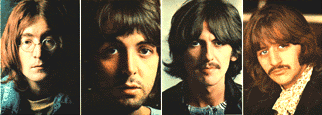 .
.
Controversial the Beatles were! Today the controversies seem almost silly! “Oh my…,” my embarassed mom asked my brother. “Is he holding his, uh…dinck?”, looking at a picture of a naked John Lennon sitting on a bed in the White Album’s large poster insert. My brother shugs. He was oblivious to it. It was no biggie. Mom never knew about the Two Virgins album released by John and Yoko a few months later, sold in a plain brown paper wrapper. But hey, it’s 1968. Today, nudity is everywhere, on TV, on billboards, in magazines… It sells…
My brother played the Beatles White Album constantly for the next year or so. I learned the songs well. My brother was constantly humming Ob-La-DI, Ob-La-DA. Or, Hey, Bungalow Bill, What did you Kill? and Rocky Racoon. The guitar on While my guitar gently weeps kept playing over and over. I came to associate the giant green apple logo on the vinyl records with the Beatles.
The White Album was followed by the Beatles final three albums (Yellow Submarine, Abbey Road, and Let It Be), and the disintigration of the Beatles band in 1970. But their influence on me musically will never die. But I learned quickly that the Beatles were just one part of a whole wonderful world of music. The Beatles breakup was quickly superceded by my love of new and talented artists. The Jackson 5, The Osmond Brothers, Michael Jackson, Donny Osmond, John Denver, The Bee Gees, Andy Gibb, The Carpenters, ABBA, David Cassidy, Engelbert Humperdinck, and many others who filled my world with a love of music. But I think it all began with the Beatles…
“Hey Jude, don’t make it bad… Take a sad song, and make better”
Shortly after the Beatles released The White Album, I was getting interested in Tom Jones, a rising singer from Wales with a booming and powerful voice. My brother couldn’t hide his total disgust of my musical tastes. “Tom Jones has absolutely no talent at all.” he told me. “NOBODY is better than the Beatles!”
So, my brother was a part of the group who actually believed that there was nobody who was capable of topping the Beatles. He seemed to have taken to heart John Lennon’s comment that the Beatles were bigger than Jesus. But B=by this time, I had been well taught by my parents not to believe everything I was told or had read. I learned to question things which did not make sense to me. So now the fight was on…
“Why are the Beatles better than Tom Jones?” I asked. “The Beatles write and sing their own music.” my brother rationalized. “Tom Jones only sings other people’s songs.”
“Oh,” I said. “Well, that doesn’t make sense. You mean that if you don’t write the songs you sing, you have no talent at all?” “Yes,” he said. “But that’s crazy! Tom Jones sings some amazing and beautiful songs” I said. The arguement went on for weeks. And finally, my mom took my side. “Some of the greatest singers in the world sing songs written by other people. Some people have voices so unique that it becomes a musical instrument. And some great songwriters have no singing talent at all ” she said matter-of-factedly. And just as quickly, the arguement was over.
My Mom introduced me to one of my favorite musicals of all time: The King and I. The Beatles were my mom’s Nelson Eddy, Jeannette Macdonald, and Mario Lanza. She adored them. But she never ever showed any distaste for our choice in music. She actually loved our music! “I can sing you a song about anything you can possibly think of! Try me!” she challenged me.
“Mmm.” I thought. “How about a clock?” I asked?
“My grandfather’s clock was too tall for the shelf, so it stood 90 years on the floooor. It was taller by half than the old man himself, though it weighed not a pennyweight moooore.” she sang.
“OK.” I thought. I watched as our cat Buffy scratched herself persistently. “How about a flea?” I asked. She won’t get this one I thought.
“Once upon a time there lived a king, who owned a handsome flea….”
A flea, ha ha ha ha ha …..a flea.
He cherished him and loved him As though a son were he…
A flea, ha ha ha ha ha …a flea ha ha ha ha ha ….a flea”
she sang.
The game went on. But I wasn’t going to beat her at this game. She was too good. I gave up.
I still enjoy the exact same music I loved 40-50 years ago. I have always believed that a good song is a song you never get tired of listening to. Just like over 200 years later, we still enjoy listening to music by Mozart. We never get tired of Mozart! Good music is timeless, eternal and makes you very happy.
Karen Carpenter sang it best in her song Yesterday Once More:
When I was young
I’d listen to the radio
Waitin’ for my favorite songs
And when they played I’d sing along
It made me smile.
Those were such happy times
And not so long ago
How I wondered where they’d gone
But they’re back again
Just like a long lost friend
All the songs I loved so well.
Every Sha-la-la-la
Every Wo-o-wo-o
Still shines
Every shing-a-ling-a-ling
That they’re startin’ to sing’s
So fine.
When they get to the part
Where he’s breakin’ her heart
It can really make me cry
Just like before
It’s yesterday once more.
Lookin’ back on how it was
In years gone by
And the good times that I had
Makes today seem rather sad
So much has changed.
It was songs of love that
I would sing to then
And I’d memorize each word
Those old melodies
Still sound so good to me
As they melt the years away.
Every Sha-la-la-la
Every Wo-o-wo-o
Still shines
Every shing-a-ling-a-ling
That they’re startin’ to sing’s
So fine.
All my best memories
Come back clearly to me
Some can even make me cry.
Just like before
It’s yesterday once more.
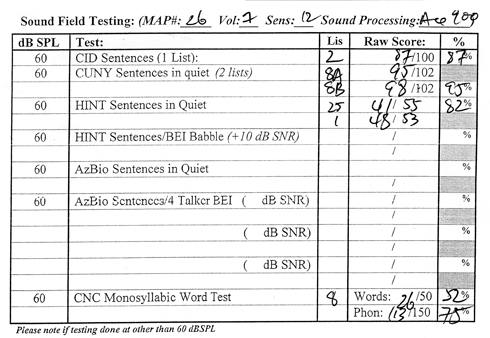
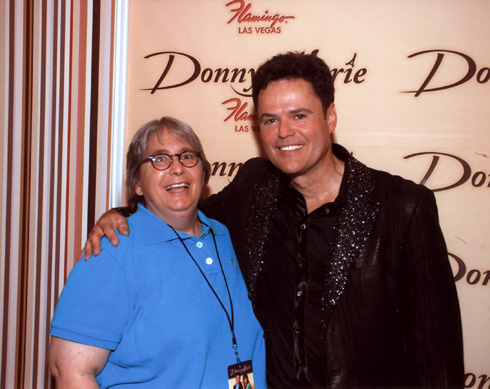

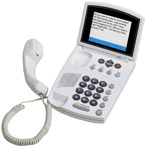

You must be logged in to post a comment.